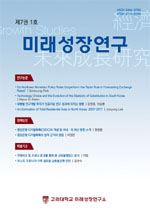An Estimation of Total Residential Area in North Korea: 2007-2017
북한의 총주거면적 추정: 2007-2017년
- 고려대학교 미래성장연구원
- 미래성장연구
- 제7권 1호
-
2021.0661 - 81 (21 pages)
-
DOI : 10.29143/KUIFG.2021.7.1.61
- 36

본고는 북한지역 총주거면적을 추정하고 주택수요 요인별로 총주거면적에 미치는 영향을 분석하였다. 현행 사회주의 시스템하의 북한에서는 주택수요가 주택공급을 창출하며 주택수요의 변동은 인구변동 영향과 소득변동 영향의 합으로 표현될 수 있다. 북한의 Mankiw-Weil 주택수요 추정결과 북한의 총주거면적은 2007~2017년 중 연평균 1.43% 증가하였다. 요인별 분해 결과 인구요인의 기여도는 매년 0.66%이며 소득요인의 기여도는 매년 0.77%인 것으로 나타났다. 이것은 북한의 대외개방이 확대되어 소득이 증가하는 경우 총주택수요와 총주거 면적이 현재 추정치보다 더 큰 폭으로 증가할 가능성이 있음을 시사한다.
This paper estimates total residential area in North Korea to analyze the effect of each housing demand factor on changes in residential area. In North Korea, it can be said that under current socialist system, housing demand creates housing supply and the change in housing demand is the sum of the effect attributable to demographic change and the effect attributable to income change. As a result of estimating Mankiw-Weil housing demand in North Korea, the total residential area in North Korea increased by 1.43% on average at an annual rate from 2007 to 2017. As a result of decomposition by factors, the contribution of the demographic factor is 0.66% per year, and the contribution of the income factor is 0.77% per year. This suggests that, if incomes increase with the expansion of external openness in North Korea, both total housing demand and residential area are likely to increase more than is currently estimated.
Ⅰ. Introduction
Ⅱ. Literature Review
Ⅲ. Determinants of Housing Demand in North Korea
Ⅳ. Analysis of Housing Demand
Ⅴ. Conclusion
(0)
(0)